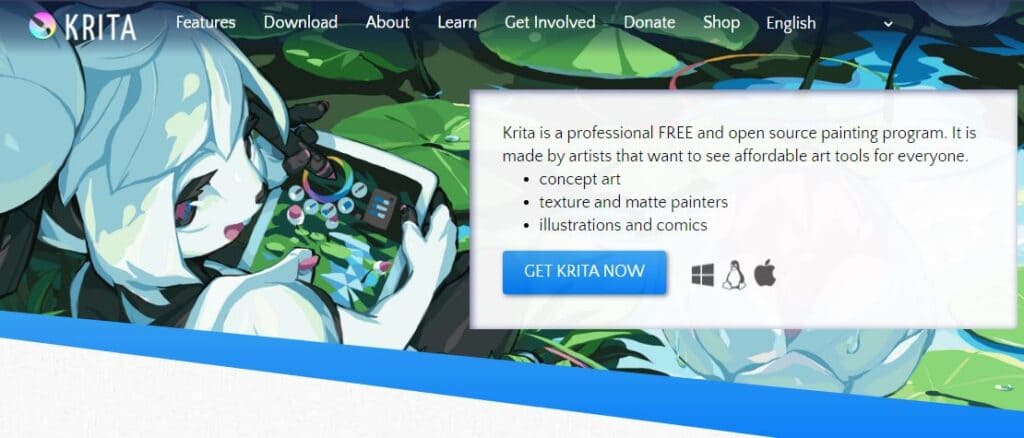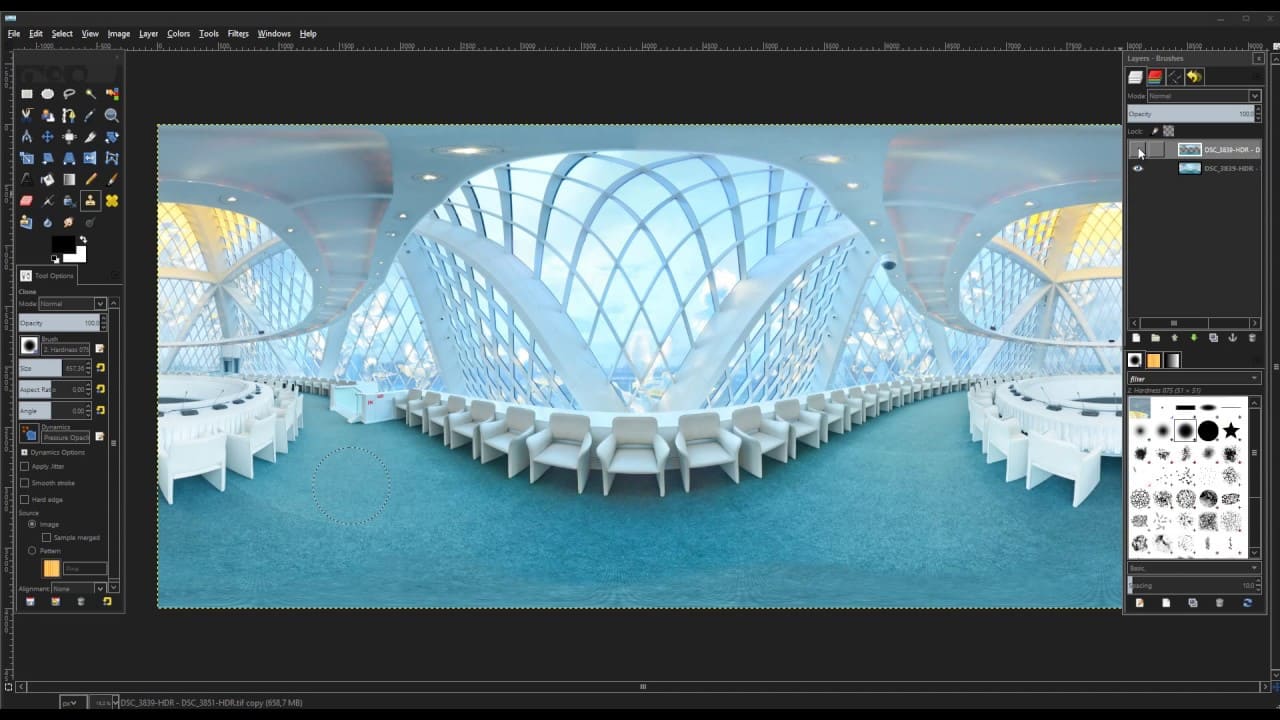
The GIMP provides far more filters - I count 113 shipping with Ubuntu, as compared to 39 for Krita - although what constitutes a filter is not standardized between the two applications. Krita supports 14 layer compositing modes, while the GIMP supports 21. Krita can display a histogram of an image, while the GIMP can show you histogram, colormap, or colorcube data. The GIMP provides those first two and adds a complete hue/saturation control, color balance, levels, threshold, colorize, and posterize. Krita provides brightness/contrast control, curves, and a desaturate operation. The GIMP implements several more adjustment tools than Krita.

It also has an ink tool, a measure tool, and drag-and-drop horizontal and vertical guides. The GIMP has several “darkroom” tools that Krita does not, including dodge, burn, sharpen, blur, and smudge tools.

On the other hand, the GIMP scores for implementing paths (editable, resolution-independent vectors), video and animation tools, and allowing transformations (such as shear and perspective) on the active selection, not just on the layer or image as a whole. Krita’s rubber stamp or “clone” tool gained two new options in version 1.6: healing, which stamps with locally averaged color rather than exact pixels, and perspective correcting, which shifts and scales the stamped pixels to preserve lines of perspective. Krita also lets you select portions of an image with Bezier curves, irregular polygons, or using the paintbrush, and it recently added a “perspective grid” overlaying construction lines to assist in painting with one or more vanishing points. Note that these are not resolution-independent vector shapes such as you might find in Inkscape or Illustrator, but painted pixels. On the tool front, Krita has geometric drawing tools with which you can paint rectangles, ellipses, stars, line segments, Bezier curves, and irregular polygons and polylines. Krita also supports two kinds of layers not found in the GIMP: watercolor paint simulation and basic adjustment layers - essentially “filter layers” that contain no image data but merely apply a color or tone adjustment to all visible layers stacked beneath. The current stable version of Krita (1.6) also supports color management, which the current stable version of the GIMP (2.2) does not. The most oft-cited check mark in Krita’s column is that it supports more bit-depths (8, some 16, and some 32) and color modes (grayscale, RGB, CMYK, L*a*b, LSB, and YCbCr) than the GIMP (which supports grayscale, RGB, and indexed). Krita sports some features that the GIMP does not, and the GIMP sports some that Krita does not. Consequently, the tools and operations that they have in common far outnumber the differences.īut there are some differences.

KRITA VS GIMP FREE
The drawing, editing, and selection tools, the layers metaphor, the floating palettes, even the menu structure and terminology of the two free editors closely follow Adobe’s lead. Let’s take a cold, hard look at the two, and compare the features side by side.īoth apps are strongly influenced by the interface and feature set of the 800-pound gorilla of proprietary raster graphics tools, Adobe Photoshop. Coming as they do from the divergent GTK+ and KDE programming camps, it can be hard to assess the differences between the GIMP and Krita without being swayed by politics and emotion. With the release of Krita 1.6, it seems like a good time to compare the two big raster image editors for Linux.


 0 kommentar(er)
0 kommentar(er)
